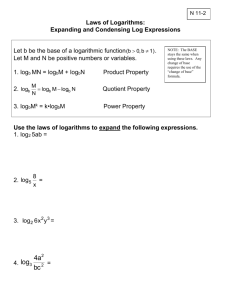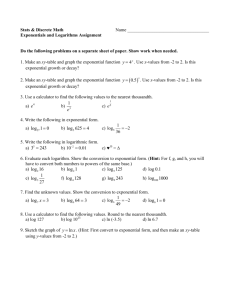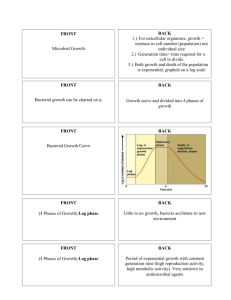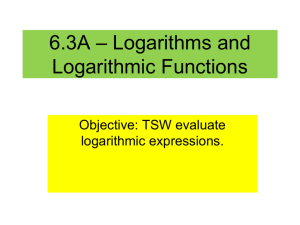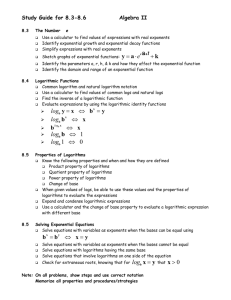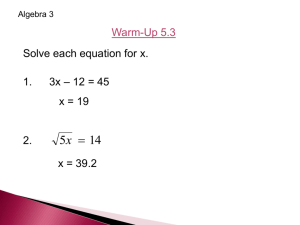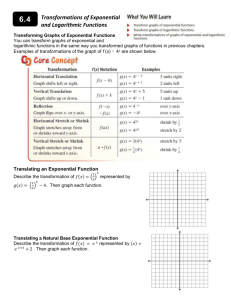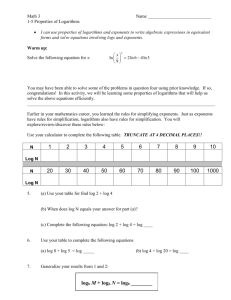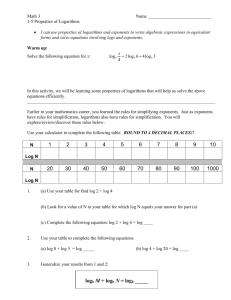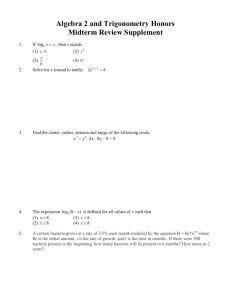AP Statistics 4.1 Transforming to Achieve Linearity Objectives
advertisement
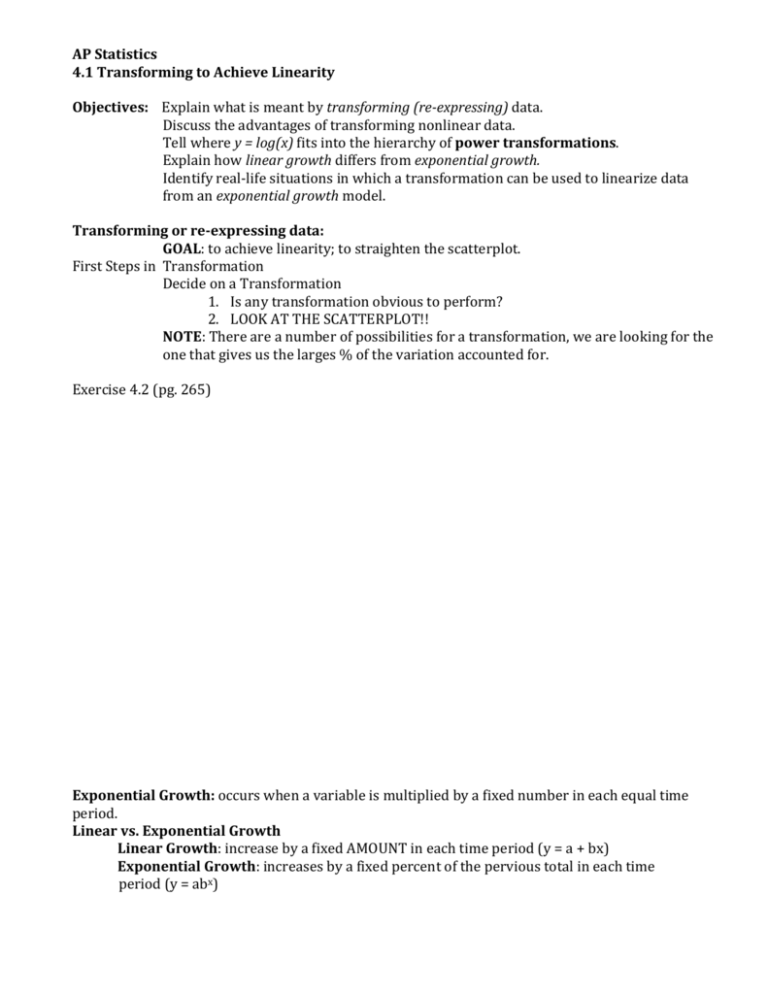
AP Statistics 4.1 Transforming to Achieve Linearity Objectives: Explain what is meant by transforming (re-expressing) data. Discuss the advantages of transforming nonlinear data. Tell where y = log(x) fits into the hierarchy of power transformations. Explain how linear growth differs from exponential growth. Identify real-life situations in which a transformation can be used to linearize data from an exponential growth model. Transforming or re-expressing data: GOAL: to achieve linearity; to straighten the scatterplot. First Steps in Transformation Decide on a Transformation 1. Is any transformation obvious to perform? 2. LOOK AT THE SCATTERPLOT!! NOTE: There are a number of possibilities for a transformation, we are looking for the one that gives us the larges % of the variation accounted for. Exercise 4.2 (pg. 265) Exponential Growth: occurs when a variable is multiplied by a fixed number in each equal time period. Linear vs. Exponential Growth Linear Growth: increase by a fixed AMOUNT in each time period (y = a + bx) Exponential Growth: increases by a fixed percent of the pervious total in each time period (y = abx) The Logarithm Transformation If the scatterplot of the data looks to be an exponential grow, try to map: x log y If the scatterplot of the data looks to be an exponential decay, try to map: log x y If you are dealing with the power model, try to map: log x log y Algebraic Properties of Logarithms logb x = y iff by = x The rules of logarithms are 1. logb (MN) = logb M + logb N 𝑀 2. logb ( 𝑁 ) = logb M – logb N 3. lobb (x)p = p logb x NOTE: log is base 10 and ln is base “e” which is approximately 2.71828. For all transformations, you can use either ln or the log. Predictions IMPORTANT NOTE: The transformed scatterplot and your LSRL models the transformed data and you MUST reflect the transformation you employed (SHOW THE TRANSFORMATION IN YOUR LSR EUATION!!!!) Exponential Growth Model Exercise 4.5 (pg.276) Power Law Models Exercise 4.11 (pg 285) HW: pg. 288-291; 4.15, 4.16, 4.19, 4.21
